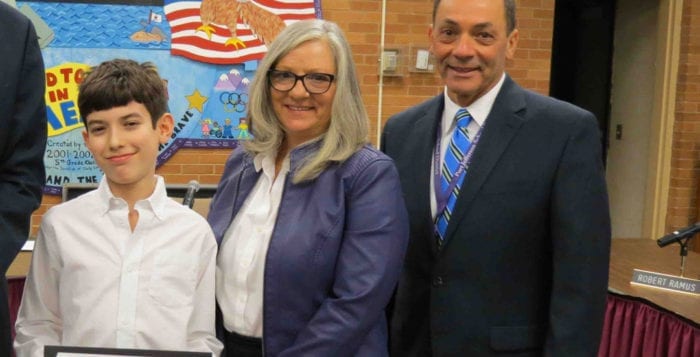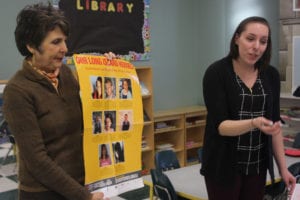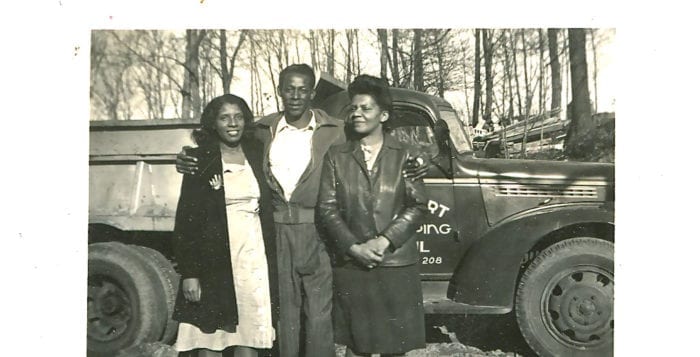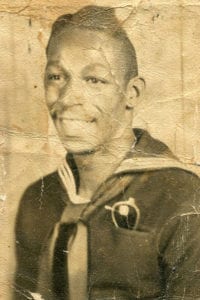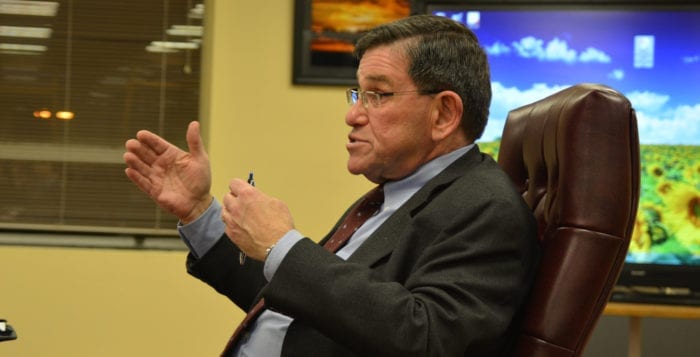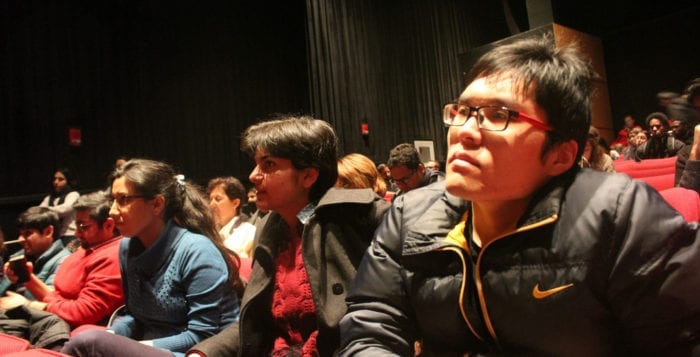An 11-year-old at Port Jefferson Middle School is using technology to improve his preparedness for quizzes and exams, but he’s also looking out for the school’s entire sixth grade.
Benjamin Perez-Flesler was preparing for a test on ancient civilizations in his social studies class in November when he decided to create a study guide modeled after one he’d seen created by his LOTE (languages other than English) teacher Robert Farenga to get himself ready to ace the exam. Once he was finished making the quiz list, he though he’d share it with his classmates.
“I think initially it was mostly for myself, but I decided it was easier to share with everyone,” Benjamin said.
His classmates were grateful for the emailed study guide they received, according to Benjamin, so he decided to create more. That’s when he borrowed another idea from Farenga, to take the studying to the next level. His teacher hosts the study guides on a Google site accessible to anyone with the address, so Benjamin decided to make a website of his own.
“Over the Thanksgiving break I thought about how much the first study guide had helped my classmates,” Benjamin said during a presentation on technology in the classroom, made to the board of education Feb. 14. “I decided I would continue making study guides for more tests as they came and realized I would need somewhere to put them … after making the site I shared it with everyone in the grade and all of my teachers. Some of my teachers showed everyone how to get to it and what it was, so many more people started using it.”
He said soon after, a few of his friends asked if they could help with the website.
“With their help, many things were added to the website such as calendars, a feedback page, more study guides and games,” he said.
“I’m very, very partial of course, I’m the proud mom. He really likes challenges, and he’s fascinated by computers and the things you can do with them.”
—Daniela Flesler
Currently, the site has three social studies guides, two for science, three for math and four for LOTE, and Benjamin is still going strong. He and his classmates who helped with the site also offer extra help sessions for students in need at the high school library.
“I was surprised and amazed — kind of in awe of the things that he’s doing by himself,” Benjamin’s mom Daniela Flesler said. “I thought it was wonderful. I was so moved that he decided to share this with everyone else in his class.”
Benjamin’s father Adrian Perez said he would be very curious to see how his son’s endeavor has impacted test scores of student throughout the grade, and praised his son for taking on the responsibility of helping the entire sixth grade.
Benjamin’s parents were far from alone in heaping adulation on the 11-year-old.
“Benjamin, I see a business endeavor in your future, but most of all I would say congratulations on being such a wonderful peer mentor and peer supporter,” school board president Kathleen Brennan said after the presentation. “What a great idea to try and help your fellow students — truly impressive. Thank you for that.”
Middle School Principal Robert Neidig expressed a similar sentiment.
“I am so proud of Benjamin’s commitment to assisting his fellow students with their academic success,” Neidig said when Benjamin was honored by the board earlier in the school year. “His actions demonstrate his selflessness and compassionate nature.”
Benjamin, who’s father is from Spain and mother is from Argentina, said he hopes to be a teacher or a marine biologist when he grows up.
His mom had a hard time holding back her pride in her son’s accomplishments.
“I’m very, very partial of course, I’m the proud mom,” she said. “He really likes challenges, and he’s fascinated by computers and the things you can do with them.”
Students and parents interested in accessing Benjamin’s study guide can visit https://sites.google.com/a/portjeffschools.org/6th-grade-study-guides/home.

